Ana Tajadura-Jiménez
STAL: Spike Threshold Adaptive Learning Encoder for Classification of Pain-Related Biosignal Data
Jul 11, 2024

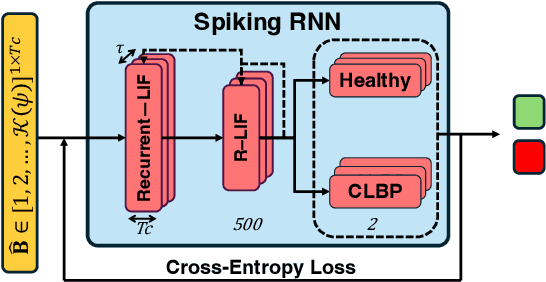
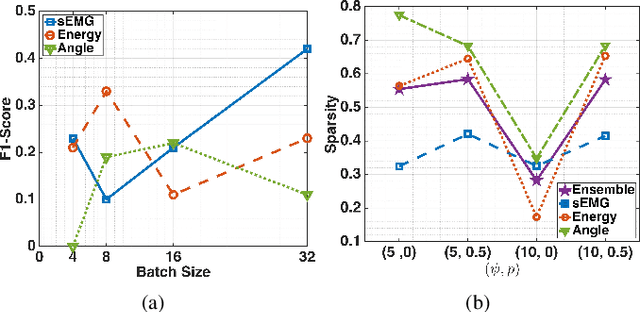
Abstract:This paper presents the first application of spiking neural networks (SNNs) for the classification of chronic lower back pain (CLBP) using the EmoPain dataset. Our work has two main contributions. We introduce Spike Threshold Adaptive Learning (STAL), a trainable encoder that effectively converts continuous biosignals into spike trains. Additionally, we propose an ensemble of Spiking Recurrent Neural Network (SRNN) classifiers for the multi-stream processing of sEMG and IMU data. To tackle the challenges of small sample size and class imbalance, we implement minority over-sampling with weighted sample replacement during batch creation. Our method achieves outstanding performance with an accuracy of 80.43%, AUC of 67.90%, F1 score of 52.60%, and Matthews Correlation Coefficient (MCC) of 0.437, surpassing traditional rate-based and latency-based encoding methods. The STAL encoder shows superior performance in preserving temporal dynamics and adapting to signal characteristics. Importantly, our approach (STAL-SRNN) outperforms the best deep learning method in terms of MCC, indicating better balanced class prediction. This research contributes to the development of neuromorphic computing for biosignal analysis. It holds promise for energy-efficient, wearable solutions in chronic pain management.
Pain level and pain-related behaviour classification using GRU-based sparsely-connected RNNs
Dec 20, 2022
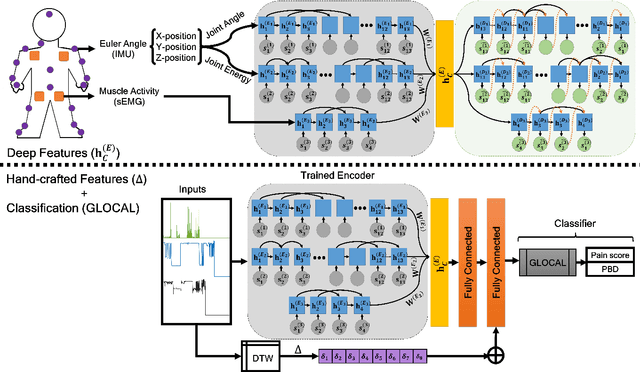
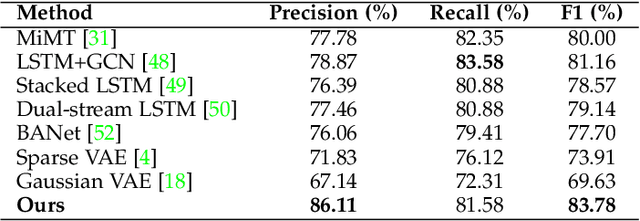
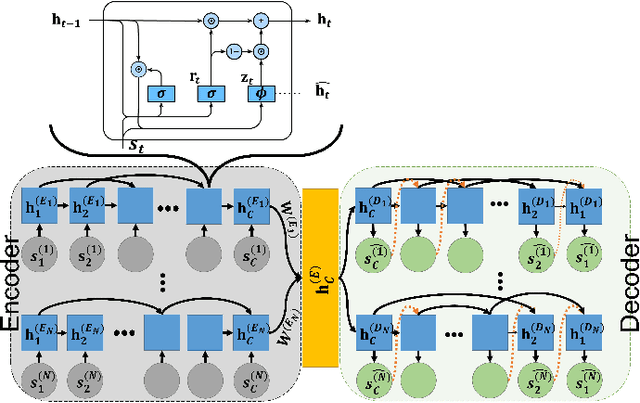
Abstract:There is a growing body of studies on applying deep learning to biometrics analysis. Certain circumstances, however, could impair the objective measures and accuracy of the proposed biometric data analysis methods. For instance, people with chronic pain (CP) unconsciously adapt specific body movements to protect themselves from injury or additional pain. Because there is no dedicated benchmark database to analyse this correlation, we considered one of the specific circumstances that potentially influence a person's biometrics during daily activities in this study and classified pain level and pain-related behaviour in the EmoPain database. To achieve this, we proposed a sparsely-connected recurrent neural networks (s-RNNs) ensemble with the gated recurrent unit (GRU) that incorporates multiple autoencoders using a shared training framework. This architecture is fed by multidimensional data collected from inertial measurement unit (IMU) and surface electromyography (sEMG) sensors. Furthermore, to compensate for variations in the temporal dimension that may not be perfectly represented in the latent space of s-RNNs, we fused hand-crafted features derived from information-theoretic approaches with represented features in the shared hidden state. We conducted several experiments which indicate that the proposed method outperforms the state-of-the-art approaches in classifying both pain level and pain-related behaviour.
 Add to Chrome
Add to Chrome Add to Firefox
Add to Firefox Add to Edge
Add to Edge